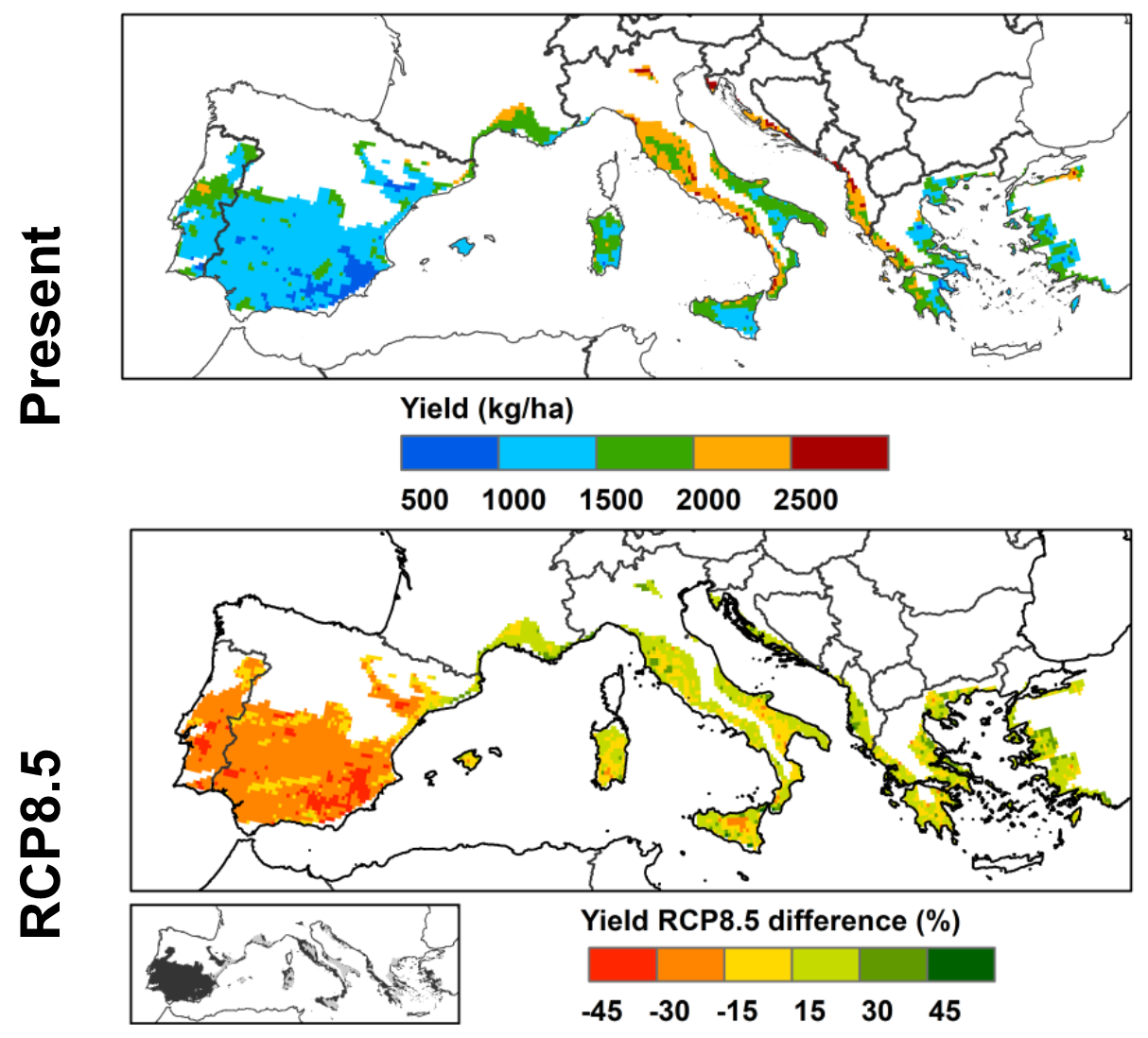Climate change impacts on European olive orchards
|
|
| Fig. 1: Olive yields simulated for the recent-past (1981-2005) and difference between future climate conditions (2041-2070, RCP8.5) and recent-past. The dark grey area in lower right insert indicates the regions where the differences are statistically significant (99% confidence-level |
The olive tree is one of the best adapted species to the Mediterranean climate and one of the most important crops in the Mediterranean basin. Traditional olive groves present very specific climatic requirements to obtain high production levels and quality. Given ongoing and projected climate change, it is important to investigate possible impacts on this crop. These impacts have now been assessed for Southern Europe using a dynamic crop model, which considers on the one hand soil, terrain and management data and on the other hand regional climate model ensemble simulations from the EURO-CORDEX initiative. This allows calculating olive yields for the recent-past (1989–2005) and the future (2041–2070, following the RCP4.5 and RCP8.5 scenarios) in southern Europe (Fig. 1). For the recent-past, significant differences are identified between western and eastern olive growing areas. Southern Iberia shows high growing season temperatures and low values for growing season precipitation, which contribute to higher potential evapotranspiration and consequently stronger water demand. Thus, yields are typically lower in inner south Iberia and higher in Italy and Greece (in agreement with historical field data), where more adequate climate conditions are given.
Future projections indicate a general increase in the growing season length along with an increase in the growing season temperature (up to 3°C). The growing season precipitation is projected to decrease across Western Europe, leading to enhanced water demand and consequently a yield decrease (reaching -45% in parts of Southern Iberia). Over southeastern Europe, a slight increase in the growing season precipitation is projected, leading to lower water demand and a small yield increase (up to +15%). Nevertheless, climate change may have strong negative impacts on the viability of olive orchards in southern Iberia and some parts of Italy. Thus, adequate and timely planning of suitable adaptation measures are needed to ensure the sustainability of the olive sector in these regions. One of the most important adaptation measures in these areas is the improvement of water use efficiency, e.g. using so-called “smart irrigation systems”. Another possible measure is the selection of more adapted olive tree varieties, with higher drought and heat tolerance, thus requiring less water to obtain similar yield levels.
Reference: Fraga H, Pinto JG, Viola F, Santos JA (2019) Climate change projections for olive yields in the Mediterranean Basin. Int J Clim, doi: 10.1002/joc.6237

